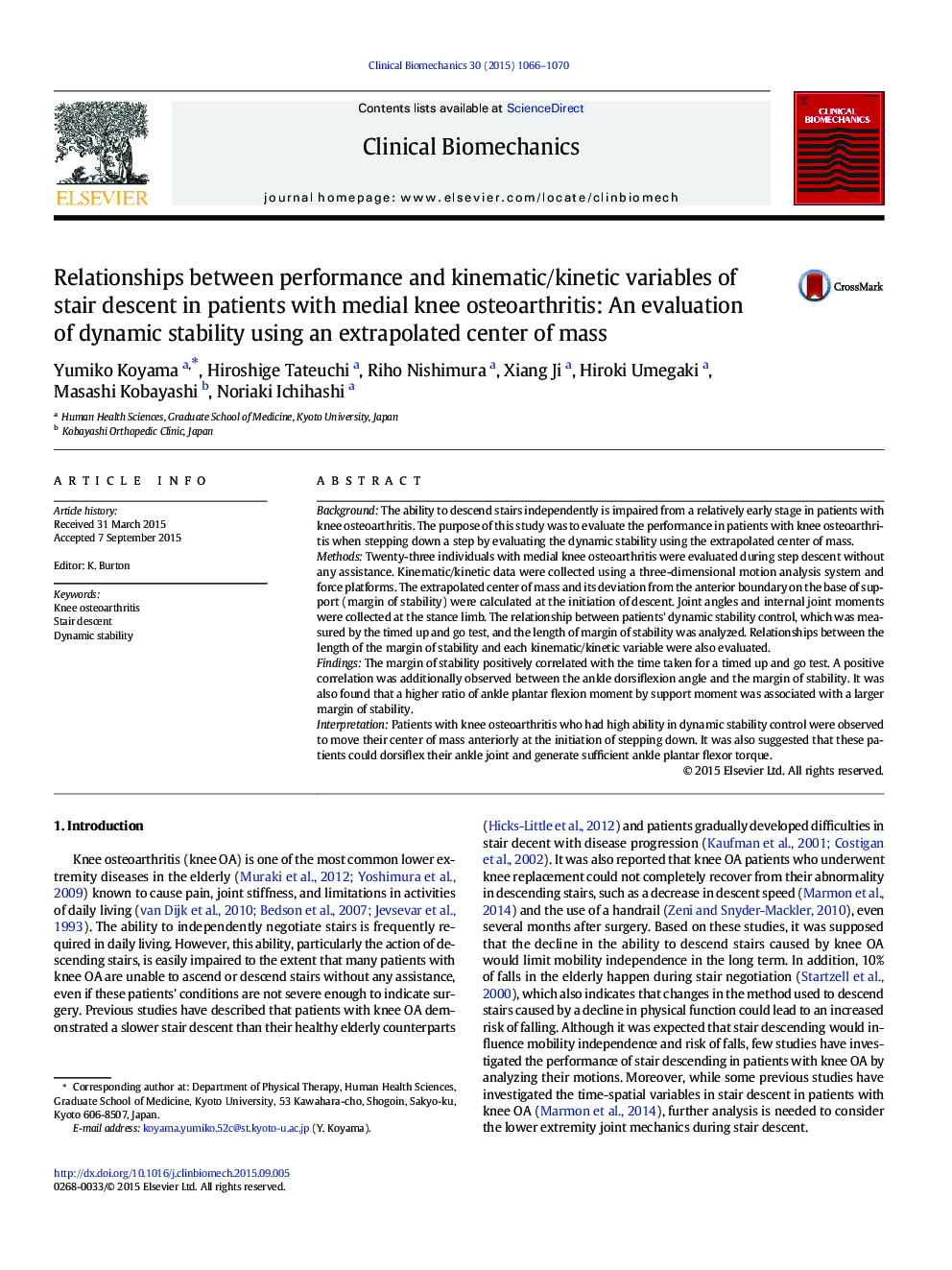| کد مقاله | کد نشریه | سال انتشار | مقاله انگلیسی | نسخه تمام متن |
|---|---|---|---|---|
| 4050072 | 1603748 | 2015 | 5 صفحه PDF | دانلود رایگان |
• We evaluated dynamic stability control during stepping down in patients with knee osteoarthritis.
• The degree of dynamic stability control was quantified by calculating the extrapolated center of mass.
• Patients with high dynamic stability control were able to move their extrapolated center of mass more anteriorly at the initiation of step down.
• Adequate ankle joint dorsiflexion and plantar flexor torque generation would improve the performance during stair descent.
BackgroundThe ability to descend stairs independently is impaired from a relatively early stage in patients with knee osteoarthritis. The purpose of this study was to evaluate the performance in patients with knee osteoarthritis when stepping down a step by evaluating the dynamic stability using the extrapolated center of mass.MethodsTwenty-three individuals with medial knee osteoarthritis were evaluated during step descent without any assistance. Kinematic/kinetic data were collected using a three-dimensional motion analysis system and force platforms. The extrapolated center of mass and its deviation from the anterior boundary on the base of support (margin of stability) were calculated at the initiation of descent. Joint angles and internal joint moments were collected at the stance limb. The relationship between patients' dynamic stability control, which was measured by the timed up and go test, and the length of margin of stability was analyzed. Relationships between the length of the margin of stability and each kinematic/kinetic variable were also evaluated.FindingsThe margin of stability positively correlated with the time taken for a timed up and go test. A positive correlation was additionally observed between the ankle dorsiflexion angle and the margin of stability. It was also found that a higher ratio of ankle plantar flexion moment by support moment was associated with a larger margin of stability.InterpretationPatients with knee osteoarthritis who had high ability in dynamic stability control were observed to move their center of mass anteriorly at the initiation of stepping down. It was also suggested that these patients could dorsiflex their ankle joint and generate sufficient ankle plantar flexor torque.
Journal: Clinical Biomechanics - Volume 30, Issue 10, December 2015, Pages 1066–1070
